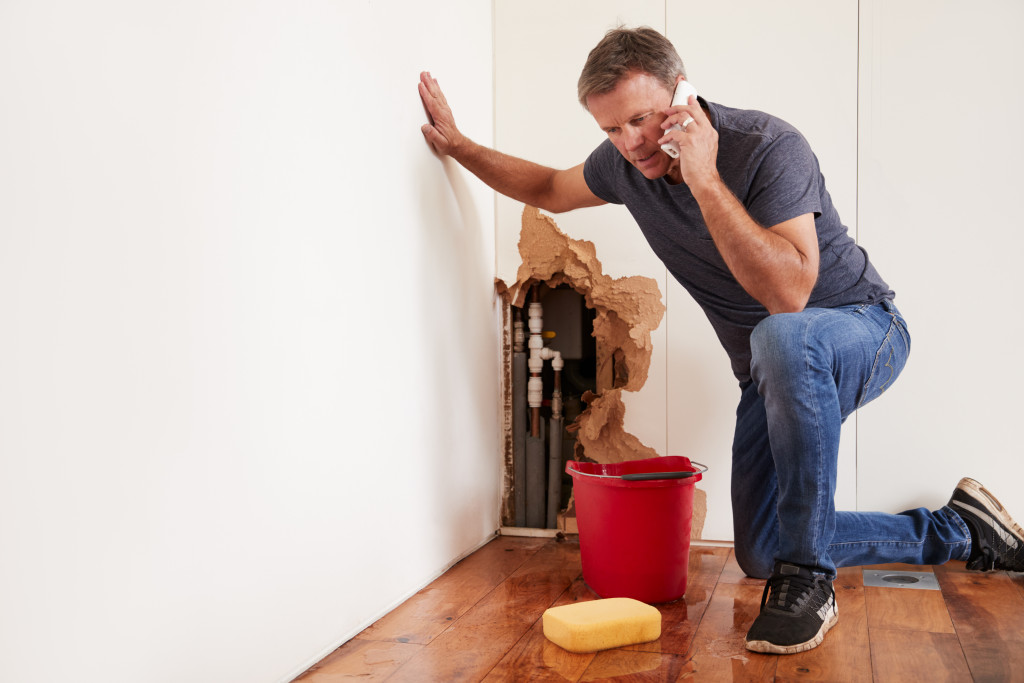- Understand your insurance policy and review for exclusions or limitations.
- Document the damage with photos/videos, make temporary repairs, and keep receipts.
- Contact your insurance company to report a claim.
- Be prepared to negotiate for adequate coverage.
- Start with the repairs by paying attention to air ducts, roofs, windows, and siding.
Natural disasters happen unexpectedly and can cause a lot of damage. When it comes to your home, dealing with the aftermath of a storm can be incredibly stressful. Not only do you have to worry about the damage to your property, but you also need to figure out how to file an insurance claim.
This can seem daunting, but knowing what steps to take to get the compensation you need to repair and restore your home is essential. Here are the steps you need to take to claim insurance for your storm-damaged home.
Understand your insurance policy

Before filing a claim, it’s essential to understand your insurance policy. Review your policy to ensure you have the coverage to repair damage caused by a storm. Look for exclusions or limitations that may affect your claim. Take note of the deductibles, the maximum amount of coverage, and the deadline for filing your claim. Familiarize yourself with the insurance company’s procedures for filing a lawsuit to ensure you follow the correct steps.
Document the damage
Take photos and videos of the damage to your property, both inside and outside your home, as soon as possible. Take note of the date and time the photos or videos were taken. If possible, make temporary repairs to prevent further damage. Keep receipts for any expenses related to quick repairs.
Contact your insurance company
Once you have documented the damage, contact your insurance company and report the claim immediately. Provide them with the details of the damage and any other information they need to process your claim. They may send an adjuster to inspect your property and assess the damages. Remember to keep copies of all communication with your insurance company.
Be prepared to negotiate
It’s not uncommon for insurance companies to initially offer less than what you expected for your claim. Be prepared to negotiate with them to get the compensation you deserve. Provide documentation that supports the damages you are claiming. Don’t hesitate to ask for a second opinion or escalate your claim to a supervisor or claims manager if you feel you are not treated fairly.
Start with the Repairs
Once you have received the approved amount and settled your claim, you can begin with the repairs. Depending on the severity of the damage to your property, this may involve repairing parts of your roof, windows, or siding. Here are the different areas in your home you need to pay attention to:
Air Ducts

Air ducts are an essential part of your home’s heating and cooling system and can be severely damaged during a storm. If your air ducts are damaged or clogged, it can lead to poor air quality and decreased energy efficiency. Hiring air duct repair and sealing services is essential to restore your air duct system. Hiring experts is necessary to ensure your air duct system is in good condition and functioning properly.
Roof
Your roof is one of the most vulnerable areas of your home during a storm. Heavy rain, wind, and hail can cause significant damage to your roof, leading to leaks and water damage. Inspect your roof for visible damage, including missing or broken shingles, cracks, or holes. If you notice any damage, contact a roofing professional to make repairs as soon as possible. Neglecting roof repairs can lead to more significant damage down the line, making the repairs more costly.
Windows
Typhoons can cause debris to fly around, and these objects can damage your home’s windows. Broken windows can lead to compromised security and energy loss. Ensure that your windows are free from damage and, if necessary, replace any broken window panes. Additionally, sealing any gaps or cracks around the windows helps to keep water from entering your home.
Siding
Typhoons can also damage your home’s siding, leading to water leaks, mold growth, and decreased energy efficiency. Inspect your siding for any visible damage, such as cracks or holes. Contact a professional to make necessary repairs or replace the damaged siding entirely. Keeping your siding in good condition protects your home from further damage and holds its value intact.
Final Thoughts
Dealing with home damage caused by storms can be overwhelming. It’s understandable to feel uncertain about how to file an insurance claim. However, following the steps outlined in this blog post, you can claim insurance for your storm-damaged home. If all else fails, consider hiring a public adjuster to help you manage your claim. By being proactive and informed, you can return your home to its pre-storm condition in no time.

